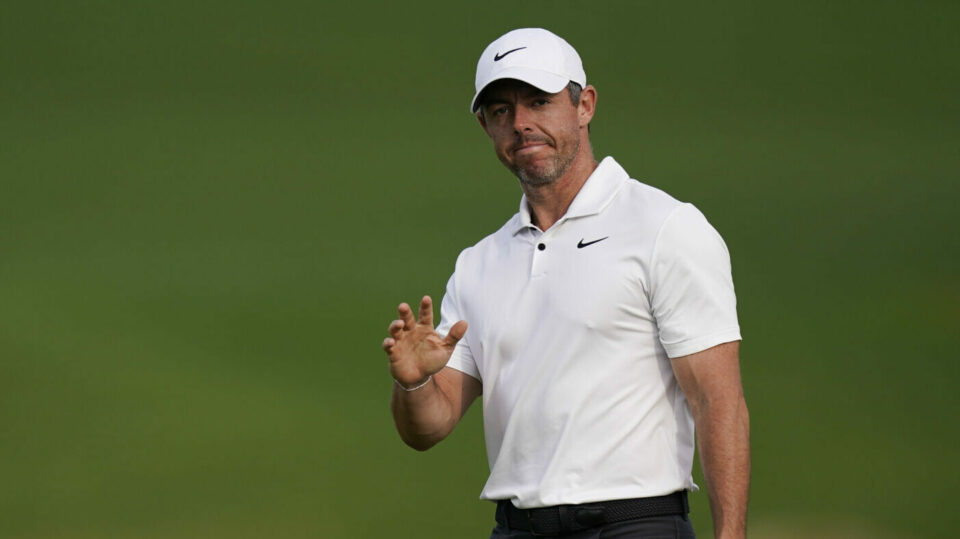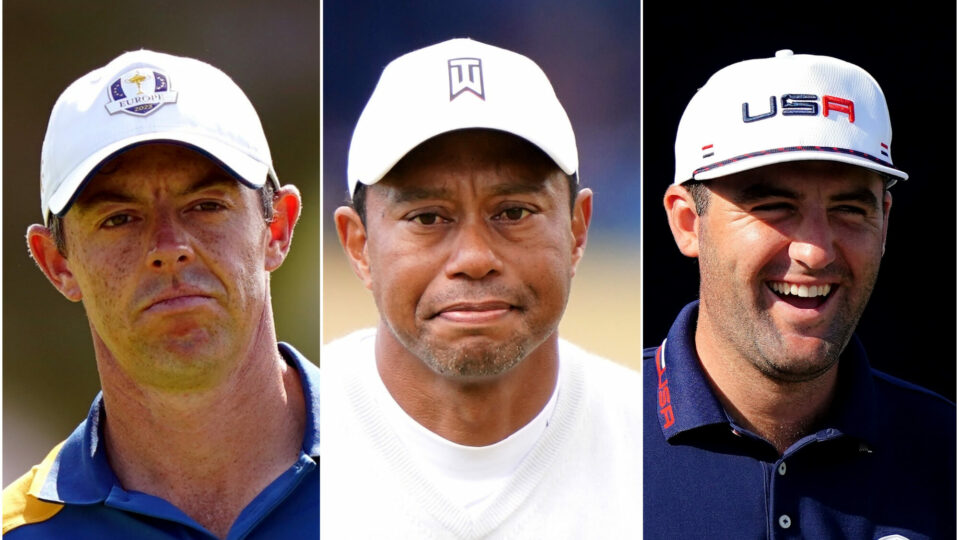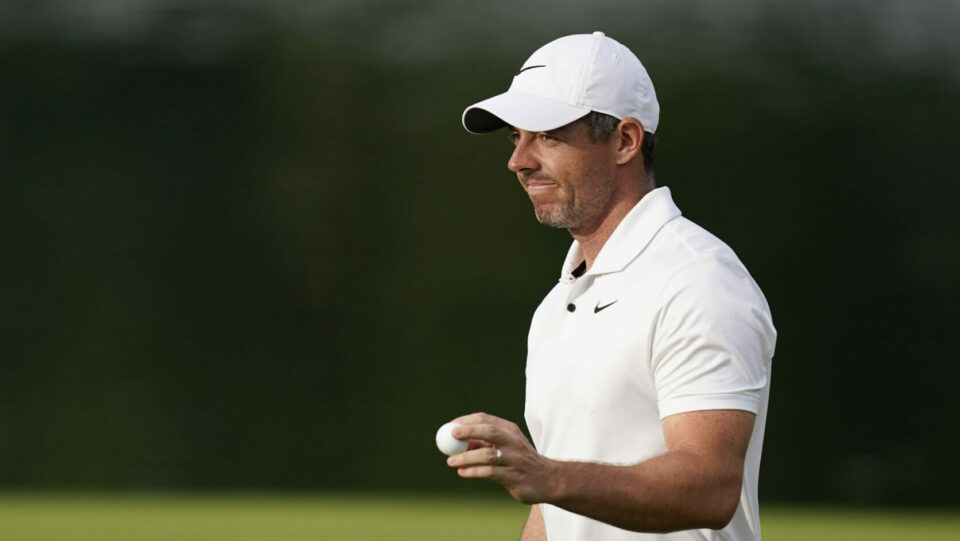When Bob Jones and Alister MacKenzie sought to design what would become Augusta National Golf Club the fundamental premise was to have a golf course that could provide interest and fun for the recreational player while still being able to challenge those at the elite level.
One of the very first holes Jones and MacKenzie found early on in their routing efforts was the 13th hole.
Named Azalea, the par-5 hole turns left on the tee shot and has a serpentine creek intersecting from the left side before wrapping itself in front of a large contoured putting surface.
Jones and MacKenzie believed par-5 holes should be seen as opportunities for bold play. A calculated execution where risk was meant to be overcome, and if that should happen, a just reward awaited those able to execute accordingly.
13th tee Augusta National- approx 60 years ago pic.twitter.com/ber1qjIpGO
— Bradley Hughes Golf (@bhughesgolf) December 4, 2018
***
Bobby Jones on the 13th, 1959
"In my opinion, this thirteenth hole is one of the finest holes for competitive play I have ever seen. The player is first tempted to dare the creek on his tee shot by playing in close to the corner because if he attains this position, he has not only shortened the hole but obtained a more level lie for his second shot.
"Driving out to the right not only increases the length of the second, but encounters an annoying sidehill lie. The second shot as well entails a momentous decision whether or not to try for the green. A player who dares the creek on either his first or second shot may very easily encounter a six or seven on the hole. Yet the reward of successful bold play is most enticing."
***
Initially, the 13th hole was the 4th hole when the first Masters was played in 1934. Jones flipped the nines a year later and the new position as the 13th placed the hole in an ideal location as players looked to make late round moves up the leaderboard.
Interestingly, when Jones first played the hole in the inaugural event, he reached the green with a 3-wood to four feet. Unfortunately, his eagle try missed and he needed to settle for a birdie.
“It has been rumoured for years. Now, it looks like Augusta National is finally lengthening its iconic par-5 13th.” ~ Michael McEwan (@MMcEwanGolf) ⬇️⬇️⬇️https://t.co/GaXaMN4ueL pic.twitter.com/rsqZmNJj0e
— Eureka Earth® (@EurekaEarthPlus) July 16, 2022
***
Byron Nelson bridge built in 1958
Commemorating the two-time Masters champion, a bridge was named in his honor when leaving the teeing area.
In 1942, Nelson won his second Green Jacket in a stirring playoff duel against fellow Texan Ben Hogan. Nelson seized command with three straight birdies at Amen Corner, the final coming at the 13th.
***
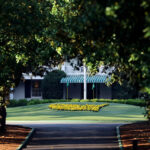
Related: Augusta’s holes ranked from 1 to 18 - Part 1
For much of Masters history the 13th hole played a comparable distance, ranging anywhere from 465 to 485 yards. That changed after the onslaught of Tiger Woods when he set the new four-round record for the event in 1997 with a score of 270.
Woods was easily able to reach the various par-5 holes in two shots and played the 13th that week in four-under-par.
The phrase "Tiger proofing" became a main storyline in the years to follow. The premise was the need to bolster specific holes from the skills of Woods and future players like him. The 13th was then lengthened in 2001 to 510 yards.
Over the years the desire of Jones and MacKenzie to see a balancing act between risk and reward became skewed towards the latter over the former. The historic stroke average of the 13th hole is 4.77. For the 2022 event that average rose slightly to 4.85.
Through the years club officials have kept a close eye on how all 18 holes have fared when the best players in the world come calling for one specific week in April.
***
The highest and lowest scores on the 13th
The highest score recorded on any hole at Augusta National is the 13 recorded by Japan's Tommy Nakajima in the 2nd round of the 1978 Masters. Nakajima started with a hooked tee shot that found Rae's Creek and then matters simply snowballed downhill from that point.
The score was matched two years later in 1980 when Tom Weiskopf eventually holed out on the par-3 12th hole wth a 13.
The lowest score recorded is a double eagle two made by Jeff Maggert in the final round of the 1994 Masters. The double-eagle is only the fourth made in Masters history.
***
The recent concern is that the 13th has not really demonstrated any meaningful pushback and simply been easy fodder with a steady barrage of birdies and, at times, eagles scored.
In recent years the 13th has seen trees added near the left corner of the hole. The turning point for the hole on the far-right side is also narrower than what it was originally.
Speculation started to circulate that the club was looking at lengthening the 13th. Masters Chairman Fred Ridley during his annual press conference prior to the start of the 2022 event lamented how the original calculation by Jones and MacKenzie of the 13th hole when first created has been altered because of the athleticism and distance modern players are able to drive the ball.
The strongest of players have been able to easily reach the green in two shots without even having to use driver from the tee.
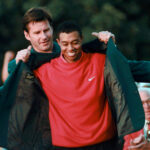
Related: The Green Jacket – 16 key facts about golf's ultimate prize
Ridley added the idea of having a mid and short iron for one's second shot into the green is not what was originally intended. However, Ridley, at his 2022 press briefing, did not say when any future changes would be made.
That happened after the 2022 event concluded and a new teeing area is now available for usage. The 13th, as outlined in the media guide sent out earlier this year, lists the hole now at 545 yards.
Adding yardage to various holes at Augusta National is not a new phenomenon.
When Tiger Woods won his first Masters in 1997 the total yardage was 6,925 yards. Twenty-six years later and this year's Masters will see a yardage of 7,545 yards.
Holes such as the 5th, 7th, 11th, 15th, and 18th have seen significant gains in overall yardage over that time.
***
Jack Nicklaus on the 13th, hole 2017
"In my prime, the 13th, was not only one of my favorite holes but was one of the best in golf. It presented its risks and reward perfectly. But the golf ball has changed things.
"If you're not going to roll back the golf ball, you really need to lengthen the hole by 30-40 yards to test the players today."
***
The 13th is only the latest addition to that roster. What is clear is that Augusta National wants a return to the balancing act between risk and reward.
Having players fully realize that success at reaching the green in two shots is not an automatic rite of passage.
Jones and MacKenzie firmly believed strategic thinking was a central core on the overall strength of Augusta National.
With the added length the demands on the tee shot will only intensify. Nearly all the field will now need to hit driver and in addition maneuver the ball on a controlled right-to-left ball flight to secure the flattest lie in the fairway.
Getting to the flattest part of the fairway on the left side will now require a higher level of execution than in past years.
Modern drivers do not permit as much ball-flight movement as they did from years ago. Golf balls also fly straighter than in years past. Elite players, generally are more comfortable working the ball from left-to-right with a driver.
In all probability most players will need to play out further to the right and when that happens, they will encounter a far lengthier second shot into the green as well as a sidehill hanging lie with the ball located above their feet.
The angle into the green from a far-right position is more daunting because the sidehill lie the ball promotes more of a right-to-left trajectory. Players will then encounter the very distinct possibility that shots that fly in this manner will need to start out over Rae's Creek and work back into the green.
The slightest mishit could very well mean a date with the creek.
It is this possibility that the "new" 13th will create the kind of gut-wrenching decisions in crucial moments that have long been absent.
Restoring the proper balancing act between the risk faced and the reward to be gained.
How fascinating the 13th could well be both a lucky and unlucky number for many competitors at this year's Masters.
